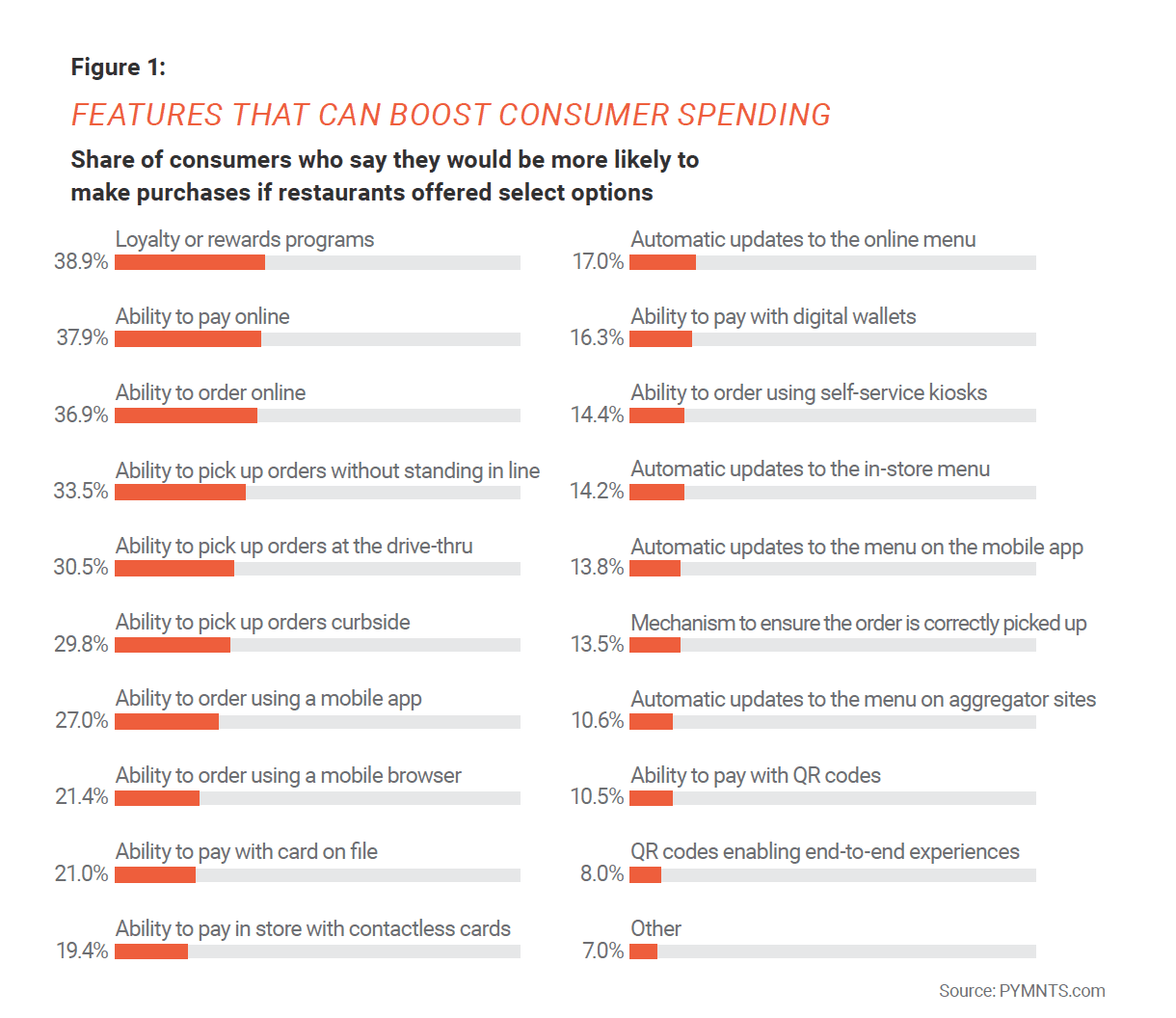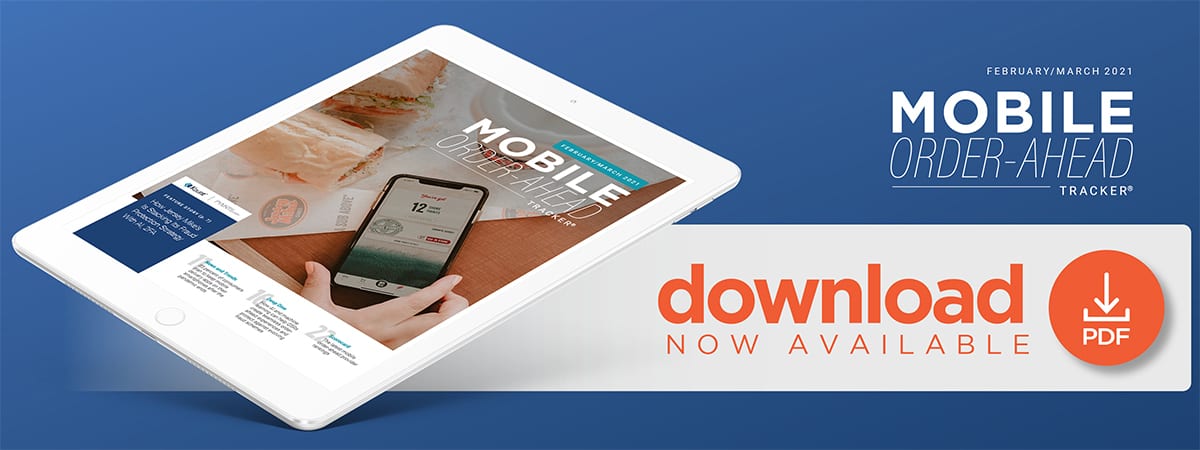Deep Dive: How AI And ML Can Help QSRs Drive Out Payment Fraud And Keep Mobile Diners Engaged

Many quick-service restaurants (QSRs) are still looking to regain lost revenue and customer engagement as the pandemic continues to weigh on the restaurant industry, with financially struggling eateries seizing any advantages that can help them stand out from their competitors.
Many have turned to digital offerings and mobile order-ahead apps to meet these challenges, adding new channels and ways to interact with customers who are more and more attached to their smartphones.
A PYMNTS study shows that diners spent an estimated $486 billion ordering food to eat at home in 2020, and 89 percent of these delivery or takeout orders were placed online via mobile apps or third-party aggregators. The majority of orders from QSRs are now made online, with 59 percent of diners ordering takeout or delivery from these eateries digitally. Mobile ordering appears to be particularly compelling to customers, with another study finding that about 46 million U.S. consumers are using their smartphones to make these choices. Approximately 54 million diners are expected to be using mobile order-ahead apps by the end of 2023.
Most QSRs are using mobile ordering and app-based solutions to bolster faltering revenues and generate more customer loyalty and engagement, but restaurants are not alone in seeking to capitalize on such options’ potential. Fraudsters hoping to reap ill-gotten gains by targeting mobile apps are employing both old-school and emerging schemes to slip past QSRs’ existing fraud protection measures.
Restaurants must therefore determine how to balance increasingly stringent fraud protection solutions with seamless mobile ordering experiences to keep customers satisfied, and this is where technologies such as artificial intelligence (AI) and machine learning (ML) could play key roles.
The following Deep Dive examines how QSR-focused payment fraud has shifted during the pandemic and how implementing technologies such as AI and ML can help eateries keep bad actors out. It also analyzes the role that mobile ordering apps play in the space and how these solutions can use fraud protection strategies to reduce cybercrime while maintaining seamless online ordering.
Achieving The Safe, Seamless Ordering Balance
QSRs are accustomed to balancing speed and friction when it comes to fraud protection, but the pandemic has made this mission even more pressing. More and more consumers have engaged with restaurants via online and mobile channels over the past few months, with one PYMNTS report finding that 21 percent of diners were likely to spend more if they could use their smartphones to place orders, for example. Digital ordering’s rise is prompting growing expectations for seamlessness and personalized service, which means that adding in too many fraud solution measures could frustrate consumers.

Integrating strong identity verification and related fraud prevention tools into their mobile apps and websites has become more essential for QSRs as the pandemic wears on, however. The jump in food delivery rates during the health crisis has given fraudsters more opportunities to blend in among the many consumers placing online restaurant orders for the first time or using new cards, making it much harder for QSRs to distinguish between legitimate customers and bad actors. Fraudsters are also attacking food delivery apps and platforms from new angles, relying on emerging scams as well as standard account takeover or synthetic identity theft schemes to snatch money and financial information from consumers and QSRs alike.
Fraud schemes that originate outside these platforms are also becoming more common as cybercriminals find ways to skirt delivery apps’ existing identity verification measures. Bad actors tapped stolen payment details to sign up for DoorDash accounts and place fraudulent orders at its partner restaurants, for example, and such scams were difficult to track because they began outside the food delivery service’s platform. QSRs are also dealing with a rising risk of credit card fraud on these platforms, both from fraudsters using stolen cards to make orders and from consumers engaging in friendly fraud by ordering food and disputing the charges in the hopes of getting free meals.
Guarding against online food delivery fraud regardless of where it originates is thus becoming paramount for restaurants as they look to reduce schemes’ impacts and keep diners happy. Integrating technologies such as AI and ML that can discern between legitimate orders and those placed using stolen cards or personal data could be key to achieving this balance.
The Invisible AI Fraud Barrier
The pandemic has made it clear that QSRs must revamp their fraud protection measures to stay ahead of cybercriminals’ evolving scams. This means that restaurants and their delivery app partners must focus more intently on monitoring consumers’ personal and financial details, and automated tools such as AI and ML could be particularly suited to this task.
AI and ML can quickly process large swaths of data to help QSRs determine whether orders being placed via digital platforms are likely to be fraudulent by assessing consumers’ details, such as names, geolocations, purchasing histories and card information. They can also help restaurants detect card-testing scams, in which fraudsters make smaller purchases using stolen cards to determine whether the charges will go through, by highlighting suspicious transactions or other odd behaviors that could indicate criminal conduct.
QSRs can create invisible fraud protection barriers by implementing AI or ML solutions on the back ends of their ordering platforms, which can keep bad actors at bay while allowing consumers to quickly and seamlessly place orders. Such stopgaps are likely to become more important to restaurants over time, especially as consumers’ newfound fondness for takeout and delivery options is expected to stick around for the long haul.
